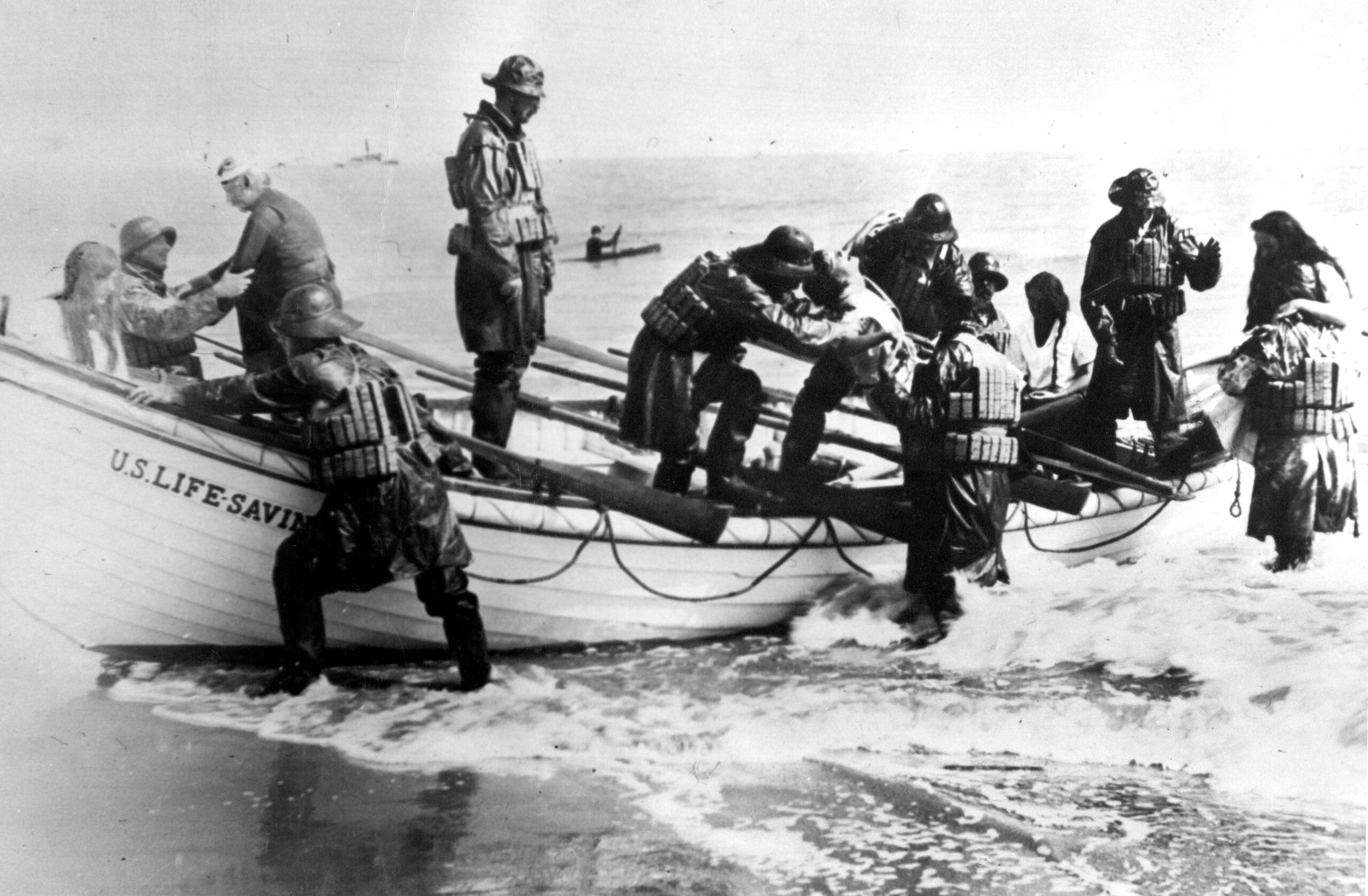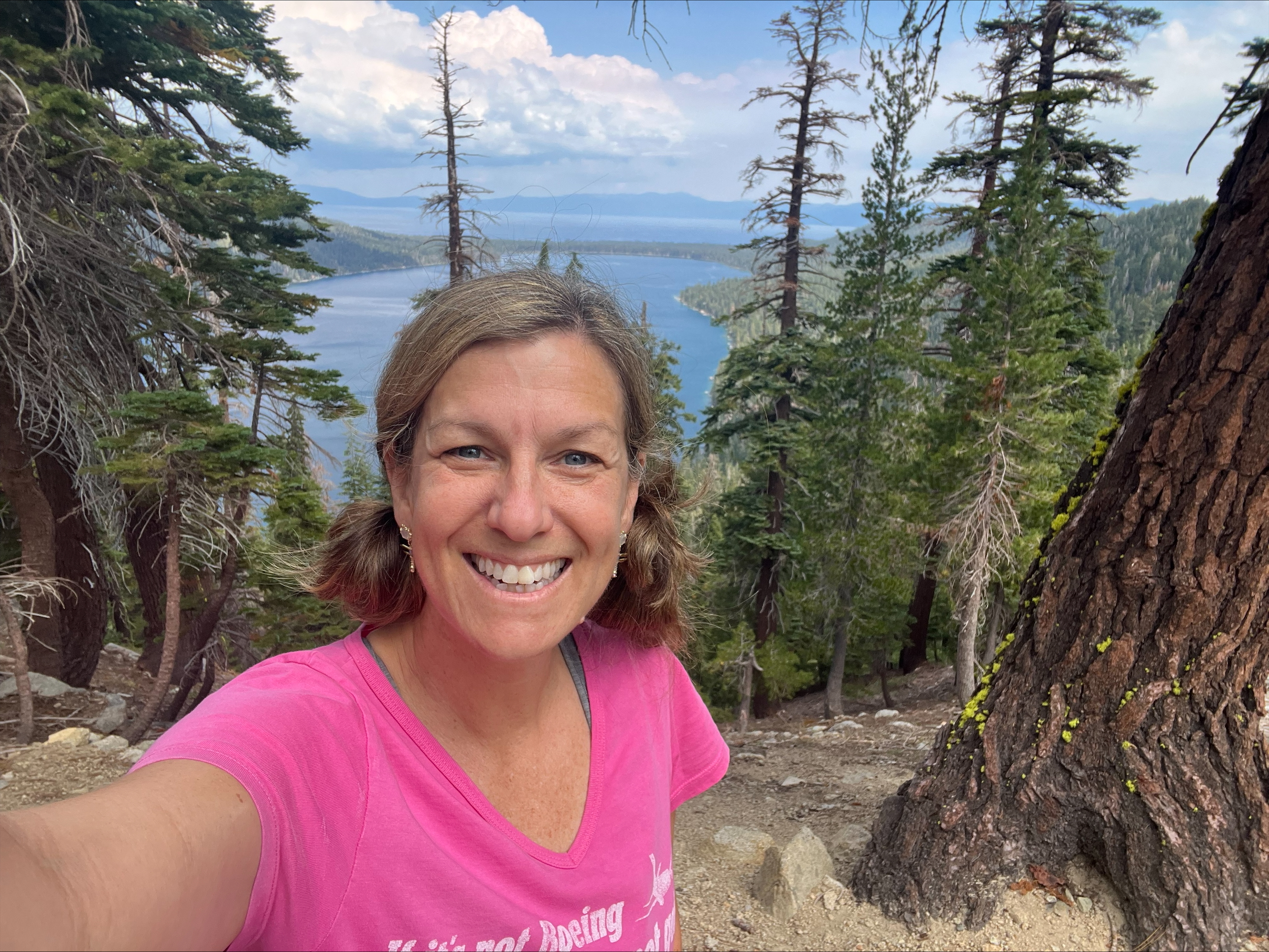In honor of the official beginning of summer, I shall relate some maritime history of the Great Lakes.
I knew almost nothing about maritime history until last summer, when my husband and I visited the Sleeping Bear Point Coast Guard Station Maritime Museum near Glen Haven, Michigan. (Acronym: SBPCGSMM?) One can find this attraction “up north,” near Sleeping Bear Dunes—at Michigan’s little pinkie tip if you’re holding up your hand, as we do, to simulate Michigan’s “mitten” geography.
Initially, the “museum” seems unimpressive. It’s just a clapboard house, a boathouse, and a couple of other buildings on a grassy area right on the shore of Lake Michigan. From 1902 to 1942, however, this was a station of the U.S. Life-Saving Service, which became the U.S. Coast Guard in 1915. Thanks to the friendly volunteer museum interpreters, I learned some fantastic historical tales demonstrating just how clever—and crazy—people can be.
Why a station at this spot? Because: shipping. White settlers poured into Michigan from the 1820s onward, and investors and industrialists immediately set about extracting lumber, iron, copper, and other commodities from these “virgin” lands. To get these raw materials around the Great Lakes basin or out the St. Lawrence required trains and boats. Lots of them.
To avoid the open waters of the big lake, sailing vessels and steamers would slip between Sleeping Bear Point and the little Manitou Islands a dozen miles offshore. It was still a tricky passage, with shoals and finicky winds, and ships frequently got into trouble, especially during the stormier periods of the April-to-mid-December shipping season.
In 1871, 214 people died in shipwrecks on the Great Lakes alone. That year, Congress addressed the nation’s shipwreck issues by establishing the U.S. Life-Saving Service. Eventually, there were 64 stations around the Great Lakes (compare that to 140 on the Atlantic coast). Three of the Michigan stations—Sleeping Bear Point, North Manitou, and Point Betsie—were specifically designed to monitor ships attempting that Manitou Passage.
There’s no radar, no radio yet. So how did a rescue operation work? Here comes the ingenuity. Each station employed a captain and six or eight “surfmen.” Keeping an eye out during daylight wasn’t so hard for the surfmen, but nighttime watch required feats of athleticism. Overnight, one surfman started at Point Betsie and walked to Sleeping Bear Point, another walked from Point Betsie to Sleeping Bear. When the two guys crossed in the middle, they compared notes and then continued, hanging up a special coin when they reached the other station. The distance was nineteen miles. On sand.
So let’s say you’re the surfman on duty, you’re walking along, it’s dark and probably cold and stormy, and you’re eight miles in, and you discover a ship in distress. Now you have to turn around and run—run! and remember, this is on sand—all the way back to the station. Ring the bell! Wake up the guys! And join in a rescue operation that would make the fittest CrossFitter faint with exhaustion.
It was like a fire station. The bell sent all the “surfmen” into action. They first dragged a wheeled wooden rig down to the beach and down the shore till they reached the endangered boat. Usually the captain of the boat would steer toward shore and try to run aground or at least get as close as possible.
Once the rescue rig was positioned, the surfmen used a Lyle gun (range: 400 yards) to shoot a twenty-pound projectile at the boat. The projectile was attached to a rope stored in a big box, coiled in the sort of intricate geometric pattern that only sailors can master. One hoped the shooter’s aim was good, because the idea was to get that projectile somewhere onto the deck of the ship. Then the rope could be tied to the mast or other high point. This resulted—if successful—in a rope secured from the boat to the rig on shore.

Meanwhile, the surfmen were running around in a carefully choreographed, heavily rehearsed routine to get the “crotch” set up. The crotch was two timbers propped up in an x formation designed to hold the rope high and create essentially a gigantic clothesline. The next step was to set up the “breeches buoy,” basically a pair of canvas drawers with a life preserver ring at the waist. The surfmen would run this doo-dad back and forth on a pulley system along the main rope line to the distressed boat, fetching in the crew one by one. Each poor sailor got the zipline adventure of his life. Apparently, the whole shenanigan was remarkably effective.
The lifesaving stations also had a small row boat that could be taken out on the water to pluck people directly from the lake. The boat was self-bailing, using a system based on a series of one-way valves fitted into runnels (not sure if that’s the right word) running bow-to-stern. Removeable wooden pins sticking out from the gunwale served as handles to drag the boat along a track toward the beach. Guys could pull the pins out so they could quickly roll over the edge and into the boat without jabbing themselves, then put the pins back in to serve as oarlocks.
One more cool gadget. Let’s say you’re out in a boat in a storm rescuing a bunch of sailors bobbing in the icy waves at night. How are you going to see them? Oil lamp? Hardly. Instead the surfmen used a canister of chemicals that created blue phosphorescence, lighting up a whole area of water for a couple hours. Genius.
In 1931, the crew of the Sleeping Bear Point Station had another problem to deal with. The sand dune was encroaching on their buildings, as dunes will do. So they propped up the two buildings, put them on rollers, and moved them a mile down the beach, using two Percheron horses walked in from town. In the process, they never broke any plaster or glass, and both buildings were plopped safely down in their new dune-free location.
I learned all this stuff partly from the nicely curated materials in the old station house, but mostly directly from the volunteer interpretive guides. One of the guides was especially eager to answer my questions. “Most people aren’t all that interested in what I have to say,” she said ruefully. She was sweeping the sand out the front door of the station house as we chatted. “We have to keep this sand dune where it belongs,” she remarked, as if it were a naughty outdoor cat.
Sadly, we did not visit the SBPCGSMM at the time of day when a group of volunteers stage their reenactment of a breeches buoy rescue, employing the assistance of visiting children to save the hapless Raggedy Ann and Andy from deadly peril. Despite missing this spectacle, I came away from our visit pleased and impressed, and with two abiding thoughts: People are so ingenious. People are crazy.
You have to marvel at the courage, stamina, and inventiveness of those who devised these tools and procedures and those who actually did this lifesaving work. According to the museum’s website, “From the time of its establishment in 1871 until it became part of the U.S. Coast Guard in 1915, the U.S. Life-Saving Service rescued over 178,000 people. Its success rate was an astounding 99%.” Totally impressive.
On the other hand, my admiration is somewhat tempered by the knowledge that, at least in Michigan, this was all in service of White settlement, industry, business, wealth, Manifest Destiny and other goals that seemed obviously wholesome at the time to the folks involved. I have no idea how wholesome it all seemed to the Ottawa, who had ceded a huge chunk of Michigan to the U.S. Government in 1836.
One historian I read observed that “From 1869-1909, 16.8 billion board feet of lumber were removed from Michigan and shipped to larger cities.” Shipping made deforesting the state profitable, and the resource extraction was crazily aggressive. People didn’t have to run ships through the Great Lakes in all weathers, risking lives and accepting the inevitable percentage losses of vessels. They did it for the sake of wealth. And what can I say? I benefit from that wealth one way or another as a Michigan resident today.
Anyway, I’m ever amazed by human ingenuity. In the face of challenges confronting us today, we’re going to need all the human ingenuity we can muster, along with plenty of wisdom and not a few miracles. Something to pray for.
Also: museum volunteers deserve medals.





